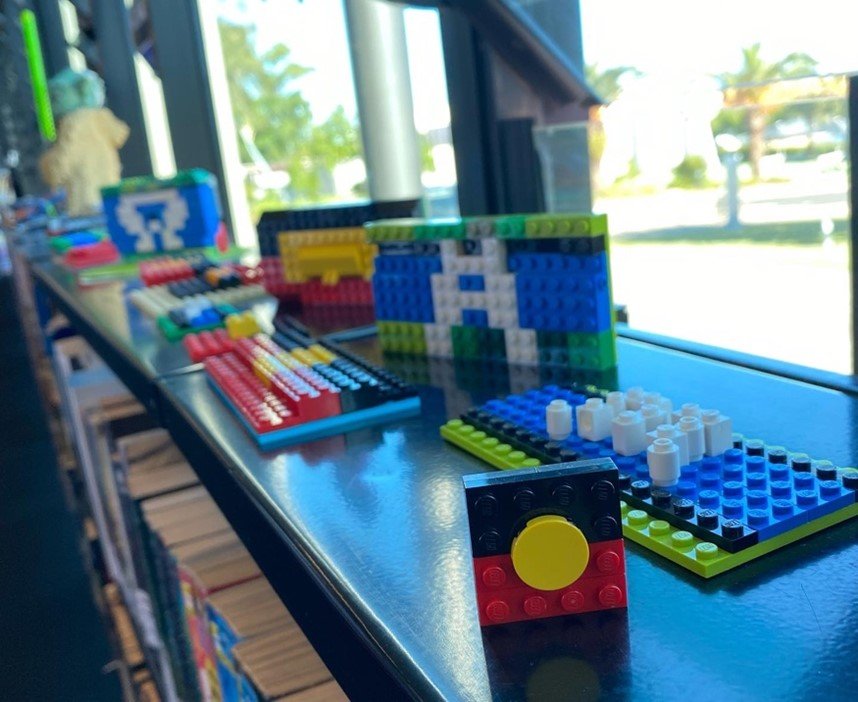Spawn Point: School libraries as safe zones of student well-being and inclusive practices
Written by Melissa Miller, Head of the Learning Centre, St Joseph’s Nudgee College
Melissa will present Beyond borrowing: Libraries as hubs of student wellbeing and inclusion at the Capacity Building School Libraries Conference to be held at the Brisbane Convention & Exhibition Centre on Friday 5 & Saturday 6 August 2022
“What I like most about our library is that it is like a ‘safe zone’ for all students. Like in a video game when you spawn at your base, or on a certain ship no one can get to, ‘cause that's your spawn point; your safe zone. Our library is my safe zone.” - Ethan, Yr 7
Student well-being is at the forefront of conversation in education. When student well-being is a priority in schools, student outcomes are better, student attendance is better, and student overall experience of schooling is better (State of Queensland (Department of Education), 2018). As the library is a central point of connection between all of the students and staff within our school community, utilising our existing library connections to build a centre for student well-being seemed like a natural extension of our strategic priorities. The best news is, it wasn’t even hard to do.
One of the things that is important to me in creating a sense of belonging, is that our students can see themselves in the library space, and that they have some ownership over it. They need to see themselves in our library collection, in the characters they read about, in the lives recorded in the biographies on our shelves, in the topics and information we provide access to, and in the physical space itself. Seeing themselves represented in our collection and our space normalises the experiences that may otherwise lead them to feeling ‘different’. These representations say, “I am like you, too. You are not alone.” Our library is one that celebrates the idea, “if you can see it, you can be it”. It’s through the diversity of the representations within our space that our library has been able to become a student-centred space for inclusion, diversity, belonging, and ultimately, the pinnacle centre for well-being within our school.
“When I enter the library, I always feel like I belong there. I'm surrounded by staff who make it clear that they care about me and all those around me, and I find a feeling of security in being in an environment which promotes both diversity and inclusivity amongst students of all backgrounds. The library has benefited me in terms of providing me with a space to openly express myself and develop a confidence to do so. Particularly, through the monthly visits by speakers from Open Doors (an organisation supporting LGBTQI+ youth), I have been able to find a sense that I am accepted in this school, and that I have the support of Nudgee's staff and students behind me in whatever I do.” - Lachlan, Yr 11
As Head of the Learning Centre I work collaboratively with school counselling staff, student formation staff, and curriculum staff to ensure that our library space is catering for the needs of our entire community; that everyone knows and feels that they belong in, and are supported by our library, both academically and emotionally. To ensure this is the case, we prioritise a diverse and inclusive collection, but we also ensure the physical space represents our students. One of the first things I did as Head of the Learning Centre was collaborate with our Coordinator of Art to display student artwork throughout the library. She very generously supplied us with student artwork from Year 6 through to Year 10. These contributions immediately brightened our library space and filled it with beautiful representations of our students. This simple action immediately created a sense of belonging and ownership for the students in our school, and it took our library from looking like an institutional library, to looking like a student-centred library; a library for our students.
To offer more connection with our students through our physical space, every fortnight we decorate the library with a particular theme which relates to our student community, their interests and passions, our wider world, and any special cultural or social events taking place. A few examples of themed weeks we celebrate are: NAIDOC Week, Reconciliation Week, Rainbow Week (LGBTQI+ Pride), PNG Independence Week, Mental Health Week, Star Wars Week, Manga Week, Marvel Week. We display and highlight all of the books we have relating to that theme and make digital powerpoints to highlight important information and resources relating to each theme. We use the themes as a way of representing, connecting with, and supporting our students. As a recognised “safe space” in our school, we also run and host the gay/straight alliance meetings and activities for our school community, facilitate connections with LGBTQIA+ guest speakers and support networks, as well as being the nominated space for NAIDOC Week and Reconciliation Week activities, guest speakers, and celebrations. We have developed First Nations language posters to ensure First Nations languages are physically present and represented in our ‘house of books’. The students love seeing their passions, cultures, identities, and interests given space and priority in our library. It makes them feel seen, accepted, and connected to our community. It shows them they are safe, and enhances their well-being through connection, acceptance, and belonging.
When I became a Teacher Librarian at St Joseph's Nudgee College (a single-sex Catholic school in the Edmund Rice tradition), I quickly realised that the library had the capacity to afford this sense of acceptance, belonging and safety to our entire school community. Every lunch time I saw the library draw in the students who sought refuge from the loud and busy playground, the students with no one to sit with, and the students who struggled to make connections with others. Education Services Australia (2022) states, “the well-being and learning outcomes of young people are enhanced when they feel connected to others and experience safe, trusting relationships”. I realised the need to support the well-being of these students by providing a place where every child knew that they could come, seeking connection and someone to play with, and they would be met with friendly, welcoming acceptance. This began the range of lunch activities we currently run. I worked with the Student Formation team to engage Year 11 Leaders in running board games in the library at lunch times. Our fabulous Learning Support teacher aids and incredible library staff all work together to ensure that the students are safe, happy, and developing healthy connections and good social skills while they play. Now, any child who comes to our library will find someone there to play with. I have played games of Uno with up to 15 children at a time, and we often have up to 30 students engaged in different board games and card games every break. We provide the space, activities, and someone to play with, for any child who needs it.
“I like the library because I believe it is a safe place where people can be themselves and always have something to do at lunchtime or after school. Whether it is finding a friend in the fabulous games and lego activities EVERY lunchtime, or simply having a quiet place to study. We are so lucky to have a library that caters for everyone and is a place for learning, inclusivity, and fun!” - Tom, Yr 12
Our lunchtime ‘Games Club’ has since stretched beyond lunch times to include Dungeons and Dragons Club after school once per week. Every week, between 10 and 12 students come to play D&D in the library after school. My husband has been working with a psychologist to develop and facilitate Dungeons and Dragons games for adults with social and emotional challenges, and he offered to do the same for the students at our school. Together they battle monsters, create strategies to explore unearthed tombs, they travel to mysterious unknown places, enter dungeons and defeat dragons, all while learning how to work together, how to balance social dynamics, how to use each others’ strengths, and how to best accommodate for each others' weaknesses. In an article titled, How autism powers my D&D, Meg Leach (2021) writes about their positive experiences playing D&D as a neurologically diverse person. They discuss the way the game assists in creating connections with others, developing self-acceptance, and developing a “social tool-kit” to assist them in dealing with overwhelming situations life presents. I have been overjoyed to see these benefits first-hand, watching friendships grow and social skills develop in our own neurologically diverse students, all while playing a game.
In addition to the various games on offer, every Thursday and Friday we also run LEGO Club from our library. We often link this opportunity for creativity and parallel play with the special themed weeks we hold to celebrate the diverse cultures and identities of the people who make up our Nudgee community. Our LEGO Club students love the “challenge of the week”, where they have the option of constructing a LEGO creation which links to the theme of the week. The weekly LEGO creations go on display as their own art-forms, and further add to the embodiment of students in our library. One of my favourite things is when I hear students excitedly proclaim, “That’s my LEGO creation!” or “I made that!”. The sense of pride I see in them, the acknowledgement that they made something so great that “the library put it on display”, brings confirmation that this place is their space, and that they are our people - they belong here.
LEGO Club students love the “challenge of the week”
I have seen first-hand the positive impact inclusive activities and spaces, and a culture of acceptance and belonging, has on the well-being of our students. I am grateful to be able to ensure this sense of belonging and acceptance is available to all of our students, and to be able to provide a safe and inclusive space for them. Our library is a space in our school where every one of our students knows they can find safety, belonging, acceptance, and someone to play with, as well as some really great resources.
Education Services Australia. (2022). Australian Student Wellbeing Framework [Ebook]. Education Services Australia. Retrieved 1 July 2022, from https://www.education.act.gov.au/__data/assets/pdf_file/0009/1365786/aswf-booklet-pdf.pdf
Leach, M. (2021). How autism powers my D&D. Polygon. Retrieved 5 July 2022, from https://www.polygon.com/22527706/dungeons-dragons-autistic-autism-dungeon-master-essay.
State of Queensland (Department of Education. (2018). Student Learning and Wellbeing Framework. Retrieved 9 July 2022, from https://education.qld.gov.au/student/Documents/student-learning-wellbeing-framework.pdf
Melissa will present Beyond borrowing: Libraries as hubs of student wellbeing and inclusion at the Capacity Building School Libraries Conference to be held at the Brisbane Convention & Exhibition Centre on Friday 5 & Saturday 6 August 2022






